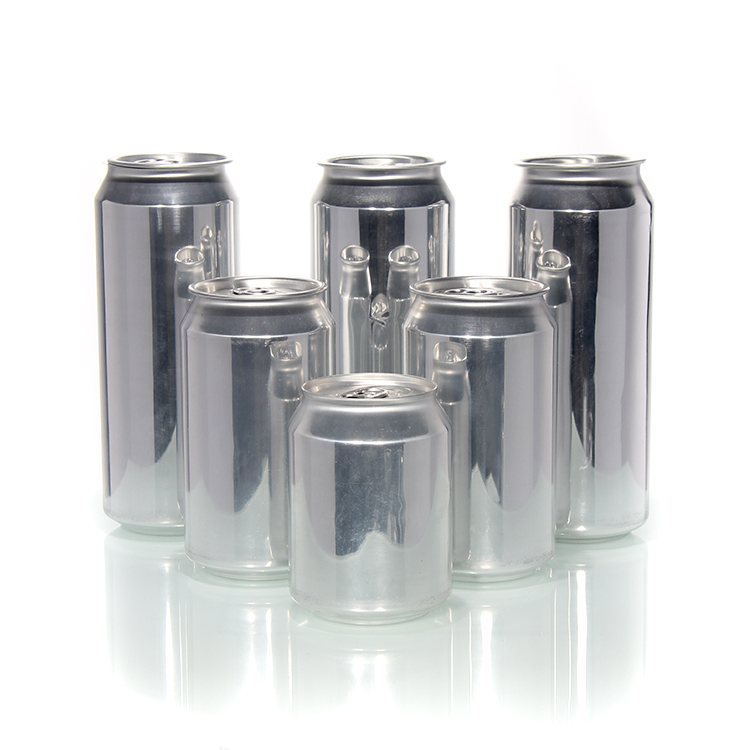Choosing Between 12 oz and 16 oz Cans: What’s Best for Your Brand?
Choosing Between 12 oz and 16 oz Cans: What’s Best for Your Brand?
For years, beer lovers have gravitated toward the traditional 12-ounce can — a staple in the industry that offers a familiar and balanced drinking experience. Its convenient size and shape make it perfect for everything from relaxing at home to socializing at outdoor gatherings, which is why countless brands use it as their go-to packaging.

On the other hand, the 16-ounce can has gained popularity, particularly among craft and specialty brewers. This larger option not only gives consumers more beer per serving but also stands out visually, making a strong impression on store shelves. Ideal for sharing or enjoying on your own, the 16-ounce can is fast becoming a preferred choice for breweries eager to offer greater value and appeal.
In this blog, we’ll walk you through how to choose the right beer can for your needs — whether you’re considering classic 12 oz cans, sleek 12 oz slim cans, generous 16 oz cans, or compact 8 oz options.
What are the Different types of Can Sizes?
According to the Can Manufacturers Institute (CMI), the beverage industry typically uses the following aluminium can sizes:
?8 oz (250 mL): Frequently found with energy drinks, specialty sodas, and beverages intended for smaller servings.
?12 oz (355 mL): The standard size for most beers, soft drinks, and energy drinks.
?16 oz (473 mL): Widely recognized as the "tallboy," this size is especially popular for craft beers and energy drinks.
?19.2 oz (568 mL): Commonly selected for single-serve craft beers and larger "tallboy" offerings.
?24 oz (710 mL): Less widespread, but used for oversized single-serve cans of beer or energy drinks.
?34 oz (946 mL): Typically associated with "crowlers," these large cans are often used by breweries and taprooms to package draft craft beer.
What is the Most Common and Standard Beer Can Size?
The most widely available beer cans on the market are the 12 oz and 16 oz sizes. Typically, 12 oz cans are packaged in 6-packs, while 16 oz cans are grouped into 4-packs, making both options practical for consumers. Globally, 12 oz slim cans tend to be especially favored, largely because they are easy to carry around and store. Their compact design allows them to fit seamlessly into standard refrigerators, coolers, and store displays. On the other hand, although 16 oz cans are slightly larger, they offer drinkers extra beer per can while still fitting conveniently in most storage spaces. As a result, they deliver a satisfying compromise between generous serving size and ease of storage.
Advantages of 12 Oz Cans and 16 Oz Cans
Beer manufacturers and drinkers alike benefit from 12 oz and 16 oz cans in several ways:
Convenience and Portability: Their lightweight design makes these cans easy to stack and transport, whether you’re heading to a picnic, party, or simply enjoying time indoors.
Eco-Friendliness: Aluminum cans are highly recyclable, helping to advance environmental conservation efforts worldwide.
Eco-Friendliness: Aluminum cans are highly recyclable, helping to advance environmental conservation efforts worldwide.
Rapid Cooling and Freshness: Cans chill quickly and keep beverages cold longer. They also protect beer from light and oxygen, preserving its taste and quality.
Marketing Potential: The smooth surface of cans allows for bold, eye-catching graphics and creative labels, making them ideal for distinctive branding that stands out on store shelves.
Which is better for your beer brand:12 Oz Cans or 16 Oz Cans?
Certainly! Here’s a very different rewording that retains the meaning: Deciding between can sizes is largely a matter of strategy and should align with your organization’s objectives, target markets, and branding initiatives. The 12-ounce can has become an iconic format in the beverage industry. Beer enthusiasts are highly familiar with this size, which benefits from a space-saving design ideal for both large-scale shipping and convenient storage at home. Its structure also lends itself well to multipacks, such as six-packs. Therefore, if your aim is to appeal to a broad audience with competitively priced products, the 12-oz can is an excellent option. Its widespread availability often results in lower production costs thanks to economies of scale, making it attractive to many producers. In contrast, the 16-ounce can is often chosen by craft breweries or brands wanting to signal a premium product. Offering more beer per container, this format helps set a brand apart and appeals to consumers seeking something unique. For drinkers, the classic 12-oz can remains popular among those who enjoy a quick, cold drink — its smaller size helps ensure the beer stays cool throughout consumption. Meanwhile, the 16-oz can caters to those looking for a more substantial pour. This size is favored by fans of robust craft brews like IPAs, who appreciate savoring a larger serving. In summary, the best choice depends on your business strategy and the preferences of your target consumers.
Creative Package Cans:
For years, the beer industry has been dominated by the traditional 12 oz and 16 oz cans. Recently, though, the 12 oz slim can has surged in popularity, especially among craft beverage producers and health-focused consumers. To thrive in this competitive market, it’s crucial to partner with the right can supplier and ensure your product is packaged in cans that reflect your brand’s identity. Creative Package Cans maintains a steady supply of high-quality, line-ready brite cans and lids to meet your business’s immediate and future needs. Our state-of-the-art facility in the Southwest provides access to a new, reliable source of domestically produced aluminum beverage cans. Thanks to our network of strategically located manufacturing partners, Creative Package Cans enables customers to source cans from various regions, ensuring stable pricing and efficient logistics. Contact us today to learn more about how we can support your packaging requirements.